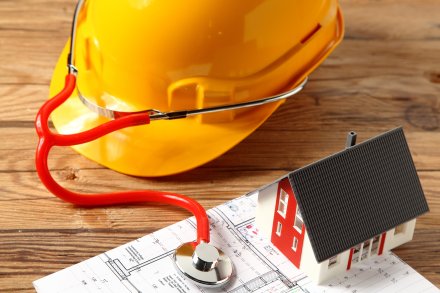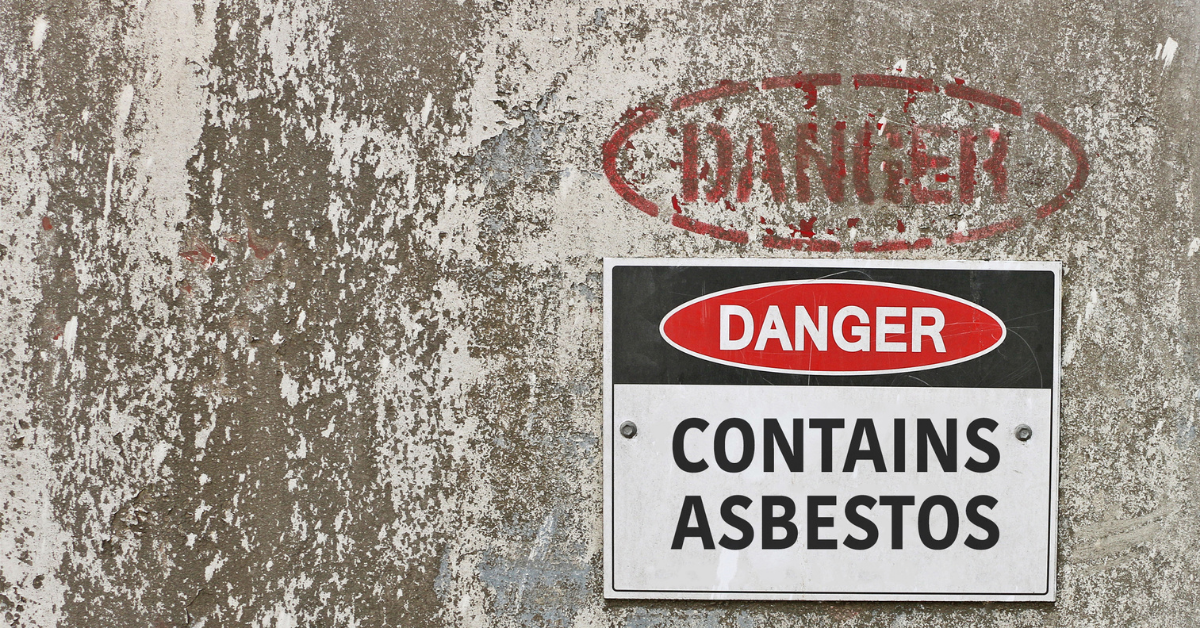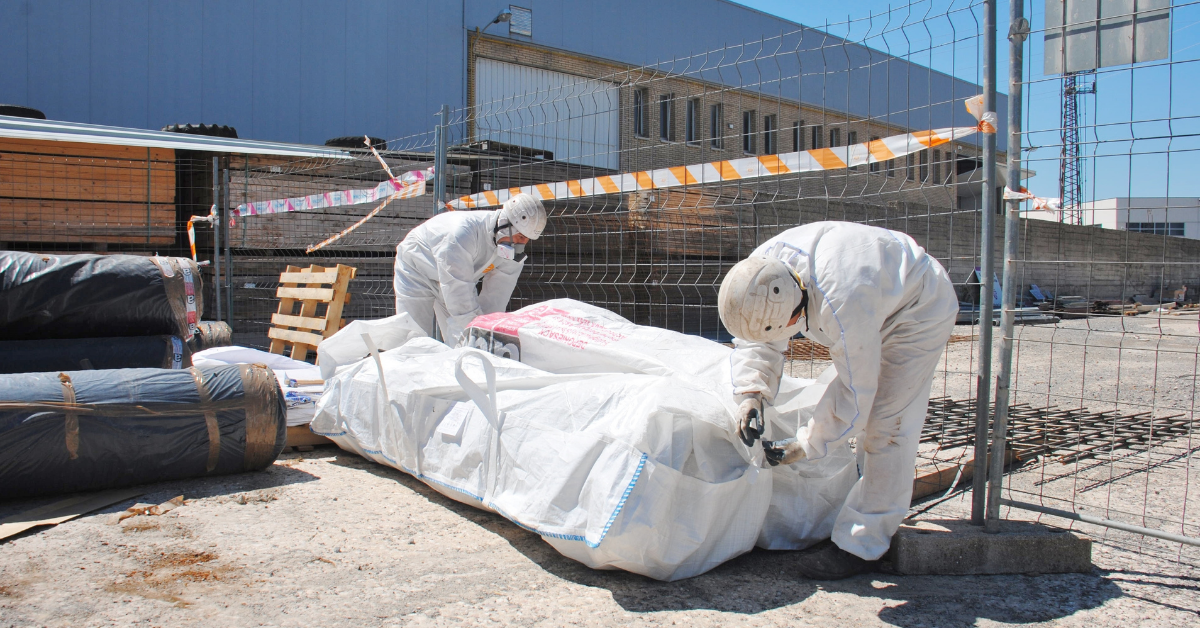
Asbestos is a naturally occurring silicate mineral that was often used in building materials between the 1930s and 1970s. While asbestos was favored due to its durability and resistance to fire, the substance was eventually restricted due to its toxicity and the threat it poses to human health.
While asbestos is now heavily regulated by both state and federal governments, many older buildings still have traces of asbestos-containing materials (ACM). Because of this, it’s imperative to verify the absence of asbestos when demolishing or renovating an old structure—two common ways of doing so are through risk assessments and asbestos surveys.
Read on for a guide to risk assessments and surveys and find out which method is right for you.
What are the Risks of Asbestos Exposure?
Asbestos has been largely withdrawn from routine use in building products in this country but can still be found in some products, especially products imported from other countries.
It is actually considered unusual to find asbestos in products bought today but if you own a home, work in a school or commercial building, or even an industrial building built before the 70s, there is a pretty good chance that there is some evidence of ACM on the premises. Asbestos was used in a long list of building products including:
- Transit pipe, sheeting, and siding for homes Insulated rigid wallboard/pegboard
- Joint compound for sheetrocking
- Glazing compounds, caulking, window sealer, and expansion joint material
- Roofing paper and shingles
- Floor tiles, mastic compounds, baseboards, and cove bases
- Thermal insulation like pipe and boiler covering, joint and elbow cement, gaskets, blown-in insulation (i.e. Vermiculite)
- Electrical insulation paper
- And some common non-construction products such as fabric, brake pads, and clutches in cars
In many of these products, asbestos was bound with the major material to give it strength and fire retardancy. In these cases, the asbestos was considered non-friable, which means it could not be released or become airborne. Therefore, it was not subject to being inhaled.
The goal in managing ACMs is to determine whether or not it is friable and if it is, to either return it to a non-friable condition or remove it. If the asbestos is friable then when it is disturbed, it can become airborne. Whether asbestos is present in the home or the workplace, once inhaled it can remain trapped in the lungs permanently.
Asbestos can lead to the development of a number of medical conditions, including:
- Lung inflammation and scarring
- Cancer
- Mesothelioma
- Asbestosis
- Pleural plaques and thickening
In addition to these conditions, asbestos puts those exposed at risk of non-medical effects such as financial strain due to necessary time off of work to recover. From a managerial standpoint, dealing with the adverse effects of asbestos can cut profits severely.
 What is an Asbestos Risk Assessment?
What is an Asbestos Risk Assessment?
An asbestos risk assessment is essentially an official inspection of a building to determine just how likely anyone working inside is to experience any adverse effects of asbestos. Both the building manager and operations manager are responsible for ensuring that this assessment is carried out.
During the assessment, potential health risks will be examined and necessary precautions will be identified to minimize the risks of the environment.
Why Do You Need to Conduct a Risk Assessment?
Risk assessments are essential for determining the level of danger that asbestos poses to a building. Because asbestos can be so deadly, knowing the severity of the exposure is useful for determining what sort of precautions to implement.
From a business standpoint, a risk assessment can help you determine how to protect your employees—not to mention avoid any unnecessary costs.
Who Can Perform a Risk Assessment?
Technically, anyone on the premises can carry out the risk assessment, this includes an employee, the employer, or a specialist.
The only criteria is that the person performing the assessment is knowledgeable enough to adequately examine the space. They must have a good understanding of the risks of asbestos, federal asbestos regulations, and the proper precautions to take against the substance.
What Do You Do Once a Risk Assessment is Complete?
After the building has been assessed and the risks evaluated, the next step is to establish and implement the proper precautions.
Now that you know the severity of the exposure, you can take action to either remove the asbestos or lower its effects to a reasonable level. While it’s tempting to have the asbestos removed, this is costly and could potentially be more dangerous than implementing other precautions such as installing local ventilation.
What is an Asbestos Survey/Asbestos Assessment?
If you are a school, you should have conducted an Asbestos Survey in the 1980s as required by the EPA under their Asbestos Hazard Emergency Response Act (AHERA).
This standard was put forth to prevent asbestos from being released inside the school building during occupancy and exposing growing children and from being released into the environment during renovation, construction, and demolition activities.
The goal of the AHERA regulation was to deal with friable ACM to keep the asbestos from becoming airborne and to manage all non-friable ACM in place until such times as it had to be disturbed as a result of demolition, renovation, or construction.
AHERA Asbestos Surveys were used to identify all ACM, quantify it, determine whether the material was friable or not, repair or remove it, and then practice what is called in-place asbestos management until such time that all ACM is removed from the facility over decades. AHERA requires that ALL school buildings be surveyed, but there is an additional type of survey that EPA requires.
For any building that will be renovated or demolished, EPA requires what is called a NESHAPS (National Emergency Standard for Hazardous Air Pollutants) survey. For ANY and ALL buildings, especially older buildings, in particular, an asbestos survey is required by law, before any demolition or remodeling that will impact any ACM and those materials must be removed before those activities commence.
In other words, leave any ACM alone if it is in good condition and manage it in place until it will be impacted by building activities and then abate it. However, if you’re planning any renovations/construction that may impact or disturb any ACMs, then a remediation plan that results in all ACM that will be impacted by that construction being removed is necessary before any construction or demolition activity can commence that will impact that ACM.
A quality Asbestos Survey will tell you the following about any ACM in your building:
- Whether or not there is asbestos present If so, how much?
- The location of all ACM
- The condition of any ACM identified
- Recommended actions for abating/removing all ACM
Who Can Perform an Asbestos Survey?
Asbestos in buildings is regulated differently in almost every State. EPA has AHERA and NESHAPS requirements for inspections but each State more or less decides who can do those inspections and the credentials they must have.
An Accredited Inspector is generally the credential that is required but that can change from state to state. However, regardless of the credentials, experience is what counts the most, i.e. the more buildings an Inspector has serviced over a longer period of time is the best measure of the quality of an inspection. The AHERA regulation allows Inspectors to assume whether a material contains asbestos or not. This can cause a lot of confusion and added costs when non-ACM is assumed to be ACM.
Testing of Suspect Asbestos Containing Materials (SACM) is always the better way to go to make sure you are removing all ACM and not paying to remove non-ACM. The Inspector should sample all suspect ACM in accordance with AHERA or best practices and send their collected samples to a lab where they will be analyzed for asbestos content.
 Types of Asbestos Surveys
Types of Asbestos Surveys
There are several types of asbestos surveys that you can perform depending on what you are planning to do with your building, including:
- AHERA Survey | required in the 1980s and almost any school has already done this type of survey. Reinspections are required on a regular basis to keep this survey up to date.
- Limited Asbestos Survey | a survey that may be limited to a small or unique portion of a building where a survey has not been performed and there may be damaged material that is suspected to be asbestos so proper clean-up can take place. A pipe break or boiler leak is a good example of this type of survey.
- Path of Construction or Pre-Renovation Asbestos Survey | sampling of materials that will be impacted by construction activities to be sure that no actual ACM will be impacted.
- Pre-Demolition Asbestos Survey | survey of an entire structure for suspect ACM both inside and outside the building so any “found” ACM can be abated before demolition.
Both asbestos screenings and limited asbestos surveys target suspect building materials in areas of question to verify the presence of asbestos.
Path of construction and pre-demolition surveys are more comprehensive inspections of building materials that will be impacted by the anticipated construction or demolition activities. For more information about asbestos screening and removal, contact The Lawson Group today.







